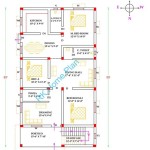NYC Mayor's Affordable Housing Plan
New York City has long grappled with a housing crisis, marked by high rents and limited availability of affordable units. Mayoral administrations consistently address this challenge, with each proposing new initiatives and building upon existing programs. Understanding the current mayor's affordable housing plan requires examining its key components, intended impact, and relationship to previous efforts.
The core tenets of any mayoral affordable housing plan typically revolve around several key strategies. These often include increasing the supply of affordable units through new construction and preservation of existing affordable housing stock. Regulatory mechanisms, such as zoning changes and tax incentives for developers, are commonly employed to encourage the creation of affordable units. Furthermore, plans often address tenant assistance programs, aiming to provide financial support to low- and moderate-income renters.
Construction of new affordable housing units is a crucial element of most plans. This involves identifying suitable public and private land for development and leveraging city resources to subsidize construction costs. Often, partnerships with private developers are essential for achieving ambitious construction goals. These partnerships may utilize various financing models, including low-interest loans, tax credits, and direct subsidies.
Preservation of existing affordable housing is another key component. Many units designated as affordable are subject to expiring regulatory agreements, potentially leading to rent increases and displacement of residents. Mayoral plans often prioritize extending these affordability restrictions and investing in the rehabilitation of older buildings to maintain their long-term viability as affordable housing options.
Zoning regulations play a significant role in shaping the city's housing landscape. Modifications to zoning rules, such as increasing allowable density or incentivizing the inclusion of affordable units in new developments, can be powerful tools for promoting affordability. However, zoning changes often face community scrutiny and require careful consideration of potential impacts on neighborhood character and infrastructure.
Financial incentives for developers, such as tax breaks and density bonuses, are commonly used to encourage the construction of affordable housing. These incentives can offset development costs and make affordable housing projects more financially feasible for private developers. The effectiveness of these incentives depends on their design and the overall market conditions.
Tenant assistance programs provide direct financial support to renters struggling to afford housing costs. These programs may take various forms, including rental vouchers, direct rent subsidies, and legal assistance for tenants facing eviction. Adequate funding and efficient administration of these programs are critical for their success in mitigating the impact of the housing crisis on vulnerable residents.
Evaluating the potential impact of an affordable housing plan requires considering multiple factors. Projected increases in the supply of affordable units, the geographic distribution of new housing, and the targeting of specific income levels are key indicators of potential effectiveness. Furthermore, the plan's integration with other city initiatives related to transportation, economic development, and community services can influence its overall impact.
Current mayoral plans often build upon the legacy of previous administrations. Analyzing the continuities and departures from earlier approaches provides valuable context for understanding the current plan's objectives and strategies. Examining the successes and challenges of past efforts can inform the design and implementation of new initiatives.
Public engagement and community input are crucial aspects of the planning process. Public hearings, community meetings, and online platforms can facilitate dialogue and gather feedback from residents, community organizations, and other stakeholders. Incorporating community perspectives into the planning process can enhance the plan's responsiveness to local needs and concerns.
The interplay between city-level initiatives and state and federal housing policies is an important consideration. Federal funding programs, state regulations, and regional housing initiatives can significantly impact the feasibility and effectiveness of local plans. Coordination and collaboration across different levels of government are essential for maximizing the impact of affordable housing efforts.
Monitoring and evaluation are essential components of any successful affordable housing plan. Tracking key metrics, such as the number of affordable units created or preserved, changes in rent burdens for low-income households, and the demographic characteristics of residents in affordable housing, allows for ongoing assessment of the plan's progress and identification of areas for improvement. Regular reporting on these metrics ensures transparency and accountability.
The implementation of an affordable housing plan involves a complex interplay of policy, financing, and community engagement. Navigating this complexity requires effective coordination among city agencies, private developers, community organizations, and other stakeholders. Clear communication, streamlined processes, and ongoing monitoring are essential for successful implementation.

Does Mayor S Housing Plan Help Where It Needed Report Offers Complex Answers

The Housing Plan Hpd

The Housing Plan Hpd

Nyc Mayor Candidate Eric Adams Unveils His Housing Plan Citysignal

Mayor Adams Outlines Blueprint For Housing Our Neighbors Plan To Get New Yorkers Into Safe High City Of York
De Blasio Unveils 41 Billion Housing Plan For New York City Finance

Mayor Adams Announces Record Breaking Year For Creating And Connecting New Yorkers To Affordable Hou City Of York

Mayor De Blasio To Complete Affordable Housing Plan 2 Years Ahead Of Schedule City New York

Nyc Mayor Eric Adams To Unveil Ambitious Plan Use Public Sites Across Big Apple For Affordable Housing Projects

Mayor Eric Adams Announces Development Plan To Create 4 000 New Apartments In Central Brooklyn York Yimby








